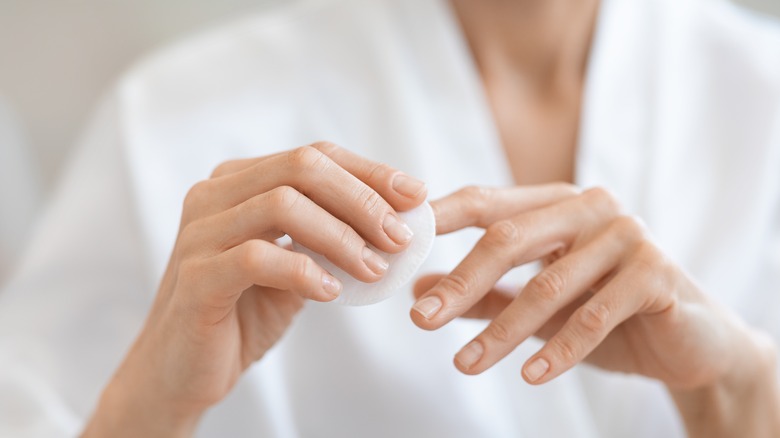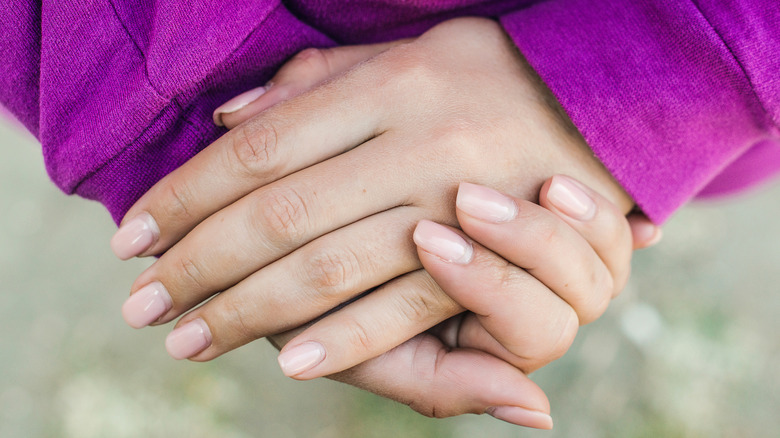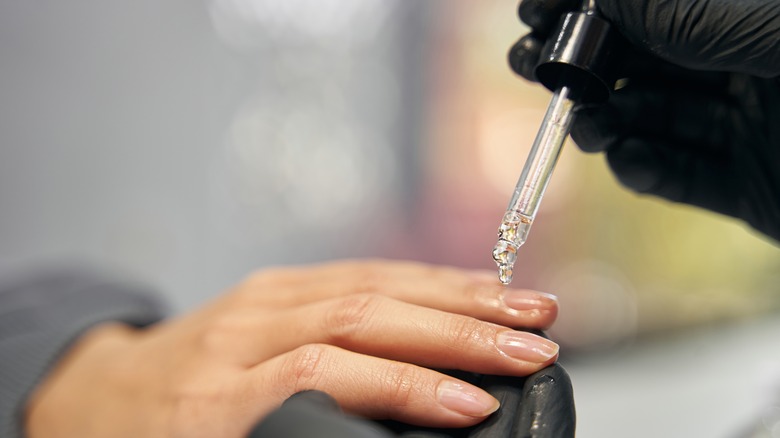What It Means When Your Skin Grows Beneath Your Nails
We may receive a commission on purchases made from links.
For many people, the ritual in beauty is part of the draw. Getting lash extensions every two weeks, hitting up the hair salon for your quarterly trim, and redoing your nails about once or twice a month is like a routine maintenance schedule that keeps you looking your best. Although you may enjoy the routine of being pampered every month, constant manicures can have a detrimental effect on the health of your nails.
Trying to revive damaged nails after too many gel or acrylic manicures can be a challenging feat. While they look nice and definitely last longer than regular nail polish, they can wreak havoc on your nails, leaving them dry and brittle. Taking breaks between manicures or going for BIAB nails that protect your natural nails is important.
Aside from going easy on your nail beds and cuticles, laying off the manicures is also essential for skin health. Meant to protect germs and debris from entering under the nail bed, hyponychium can often overgrow from too many manicures, causing pain and an unsightly image.
What causes hyponychium overgrowth?
Like their better-known skin twin, the cuticle, the hyponychium also serves a purpose for the nail. The waterproof blockade is chock full of white blood cells, helping to keep external things out from under the nail and prevent any infections that may make their way through. On a normal, healthy nail, the hyponychium isn't super visible when looking at the top of your nails. When you flip your hands around, you can see the tiny sliver of skin safeguarding the nail.
You can see the hyponychium more clearly under your nail when it is overgrown. It also grows thicker and tender, attaching itself to the nail, making trimming them painful. While an overgrown hyponychium can simply stem from genetics or nail psoriasis, it's often the result of nail biting and too many gel and acrylic manicures.
When you gel manicures often or allow your acrylics to linger around past their expiration date, the hyponychium will thicken up and cling to the back of your nail bed due to skin overgrowth. However, if you suffer from nail psoriasis, your hyponychium will separate from the nail bed and become discolored.
How to treat an overgrown hyponychium
If your overgrown hyponychium results from psoriasis, a doctor can prescribe the proper medicine to treat your nails. Often, you may receive topical treatments like retinoids, Vitamin D creams, or corticosteroids to apply to the nail. For skin growth resulting from manicures, use a cuticle remover or oil like the Essie Apricot Nail and Cuticle Oil and put it on the hyponychium. Gently push it back to prevent any more growth.
After some time, overgrown hyponychium can develop a yellow or brown discoloration and create brittle nails. Use a fungal infection cream or oral antifungal treatment to prevent it from worsening instead of getting gel and acrylic nails back to back. Abstain from manicures, or use regular nail polish for some time. Nail psoriasis sufferers should aim to keep their nails short and filed to maintain evenness. Wear gloves when you can to work around the house and keep your hands and nails hydrated.


